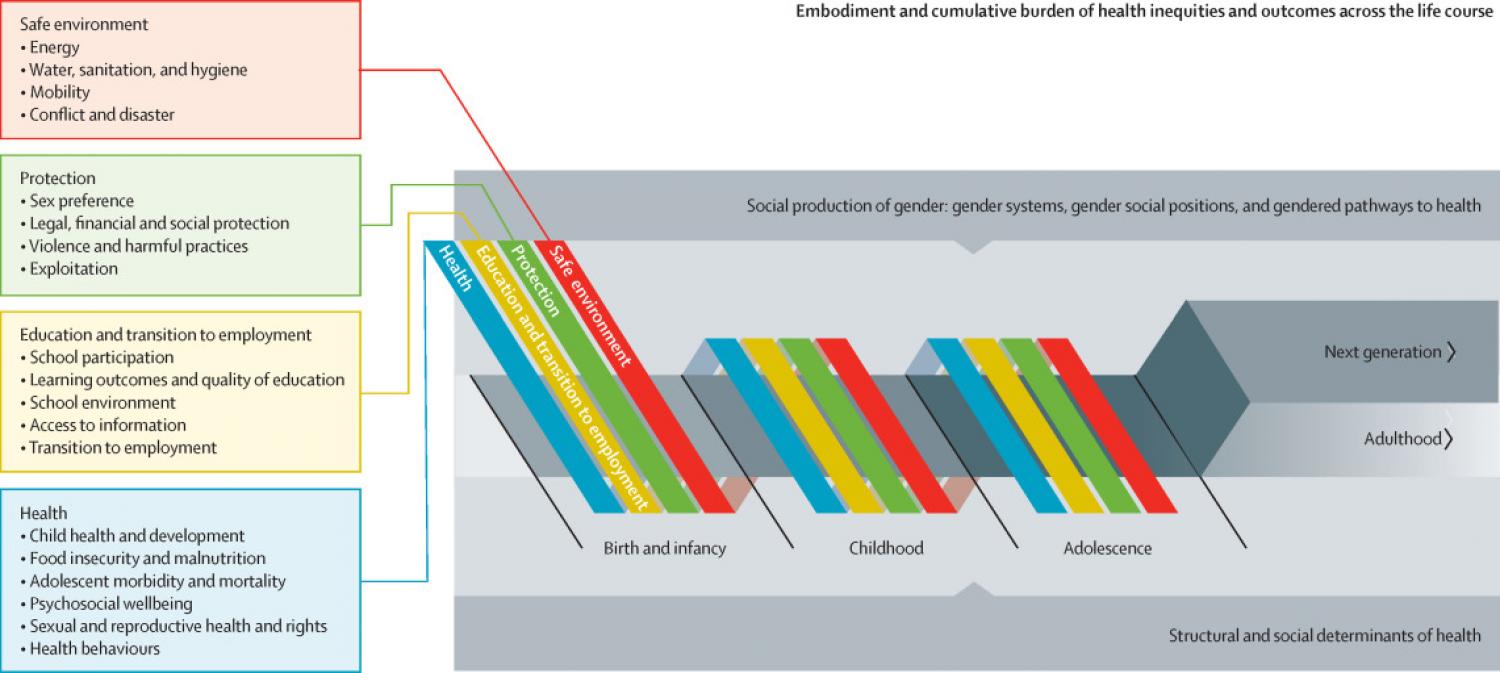
Elsevier, The Lancet Global Health, Volume 8, December 2020
Background: By adulthood, gender inequalities in health and wellbeing are apparent. Yet, the timing and nature of gender inequalities during childhood and adolescence are less clear. We describe the emergence of gender inequalities in health and wellbeing across the first two decades of life. Methods: We focused on the 40 low-income and middle-income countries in Asia and the Pacific. A measurement framework was developed around four key domains of wellbeing across the first two decades: health, education and transition to employment, protection, and a safe environment. Specific measurement constructs were then defined by considering gender indicator frameworks, the Sustainable Development Goals, indicator frameworks for child and adolescent health and wellbeing, and key stakeholder input. Available data were then mapped to define 87 indicators, subsequently populated using databases (UN agencies and the Global Burden of Diseases, Injuries, and Risk Factors Study) and nationally representative surveys. Where possible, estimates in girls were compared with boys to report relative risks. Findings: Although son preference is evident in some settings—as shown by higher than expected male-to-female sex ratios at birth in India, Vietnam, and China (all >1·10 compared with an expected ratio of 1·05) and excess mortality of girl children in some South Asian and Pacific nations—it is during early adolescence where marked gender inequalities consistently emerged. Adolescent girls face considerable disadvantage in relation to sexual and reproductive health (notably in South Asia and the Pacific), with high rates of child marriage (≥30% of women aged 20–24 years married before 18 years in Bangladesh, Nepal, and Afghanistan), fertility (≥65 livebirths per 1000 girls in Nauru, Laos, Afghanistan, Nepal, Marshall Islands, Bangladesh, Vanuatu, and Papua New Guinea), and intimate partner violence (>20% in Timor Leste, Afghanistan, Pakistan, and Myanmar). Despite educational parity in many countries, females aged 15–24 years were less likely than males to be in education, employment, or training in 17 of 19 countries for which data were available. Compared with girls, adolescent boys experienced excess all-cause mortality and substantially higher mortality due to unintentional injury, interpersonal violence, alcohol and other drugs, and suicide, and higher prevalence of harmful drinking and tobacco smoking. Interpretation: These findings call for a focus on gender policy and programming in later childhood and early adolescence before gender inequalities become embedded. Funding: UNICEF.
